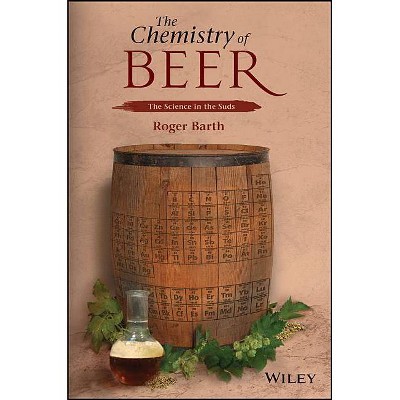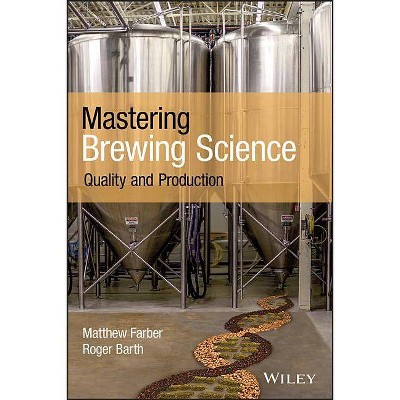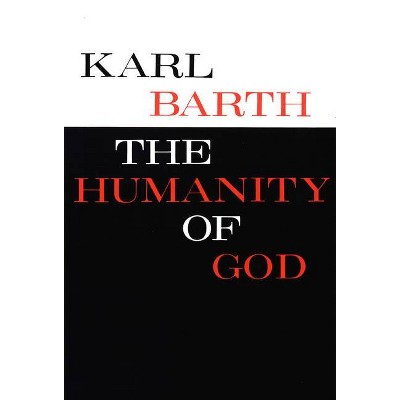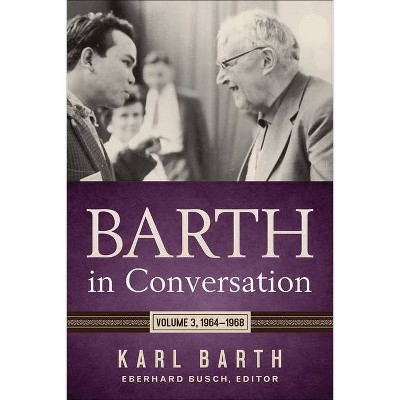The Chemistry of Beer - by Roger Barth (Paperback)

Similar Products
Products of same category from the store
AllProduct info
<p/><br></br><p><b> About the Book </b></p></br></br>"Published simultaneously in Canada"--Title page verso.<p/><br></br><p><b> Book Synopsis </b></p></br></br><p><b>Discover the science of beer and beer making</b></p> <p>Ever wondered just how grain and water are transformed into an effervescent, alcoholic beverage? From prehistory to our own time, beer has evoked awe and fascination; it seems to have a life of its own. Whether you're a home brewer, a professional brewer, or just someone who enjoys a beer, <i>The Chemistry of Beer</i> will take you on a fascinating journey, explaining the underlying science and chemistry at every stage of the beer making process. All the science is explained in clear, non-technical language, so you don't need to be a PhD scientist to read this book and develop a greater appreciation for the world's most popular alcoholic drink.</p> <p><i>The Chemistry of Beer</i> begins with an introduction to the history of beer and beer making. Author Roger Barth, an accomplished home brewer and chemistry professor, then discusses beer ingredients and the brewing process. Next, he explores some core concepts underlying beer making. You'll learn chemistry basics such as atoms, chemical bonding, and chemical reactions. Then you'll explore organic chemistry as well as the chemistry of water and carbohydrates. Armed with a background in chemistry principles, you'll learn about the chemistry of brewing, flavor, and individual beer styles. The book offers several features to help you grasp all the key concepts, including: </p> <ul> <li>Hundreds of original photographs and line drawings</li> <li>Chemical structures of key beer compounds</li> <li>Glossary with nearly 1,000 entries</li> <li>Reference tables</li> <li>Questions at the end of each chapter</li> </ul> <p>The final chapter discusses brewing at home, including safety issues and some basic recipes you can use to brew your own beer.</p> <p>There's more to <i>The Chemistry of Beer </i>than beer. It's also a fun way to learn about the science behind our technology and environment. This book brings life to chemistry and chemistry to life.</p><p/><br></br><p><b> From the Back Cover </b></p></br></br><p><b>Discover the science of beer and beer making</b></p> <p>Ever wondered just how grain and water are transformed into an effervescent, alcoholic beverage? From prehistory to our own time, beer has evoked awe and fascination; it seems to have a life of its own. Whether you're a home brewer, a professional brewer, or just someone who enjoys a beer, <i>The Chemistry of Beer</i> will take you on a fascinating journey, explaining the underlying science and chemistry at every stage of the beer making process. All the science is explained in clear, non-technical language, so you don't need to be a PhD scientist to read this book and develop a greater appreciation for the world's most popular alcoholic drink.</p> <p><i>The Chemistry of Beer</i> begins with an introduction to the history of beer and beer making. Author Roger Barth, an accomplished home brewer and chemistry professor, then discusses beer ingredients and the brewing process. Next, he explores some core concepts underlying beer making. You'll learn chemistry basics such as atoms, chemical bonding, and chemical reactions. Then you'll explore organic chemistry as well as the chemistry of water and carbohydrates. Armed with a background in chemistry principles, you'll learn about the chemistry of brewing, flavor, and individual beer styles. The book offers several features to help you grasp all the key concepts, including: </p> <ul> <li>Hundreds of original photographs and line drawings</li> <li>Chemical structures of key beer compounds</li> <li>Glossary with nearly 1,000 entries</li> <li>Reference tables</li> <li>Questions at the end of each chapter</li> </ul> <p>The final chapter discusses brewing at home, including safety issues and some basic recipes you can use to brew your own beer.</p> <p>There's more to <i>The Chemistry of Beer</i> than beer. It's also a fun way to learn about the science behind our technology and environment. This book brings life to chemistry and chemistry to life.</p><p/><br></br><p><b> Review Quotes </b></p></br></br><br><p>"A glossary supports the text. Useful for beer lovers and anyone interested in craft or home brewing. Summing Up: Recommended. All undergraduate students and general readers." (<i>Choice</i><i>, 1 October 2014)</i></p> <p>"The Chemistry of Beer is recommended for the general public interested in brewing-including home brewing-as well as college students and their professors interested in the subject." (<i>Journal of Chemical Education</i>, 1 August 2014)</p> <p>"I can see this being an essential reference book, along with Charles Bamforth's Beer: tap into the art and science of brewing, for anyone involved in brewing, including home-brewers." (<i>Chemistry & Industry</i>, 1 August 2014)</p> <p>"The chemistry of beer sounds like a perfect read for a lapsed chemist such as myself who enjoys beer and brewing science. . . The text is accessible and readable and is, overall, a welcome addition to the catalogue of beer and brewing books available." (<i>Chemistry World</i>, 19 June 2014)</p><br><p/><br></br><p><b> About the Author </b></p></br></br><p><b>ROGER BARTH, PhD, </b> has been a professor in the Department of Chemistry at West Chester University since 1985. He teaches courses in General Chemistry, Physical Chemistry, and Introductory Chemistry. Dr. Barth also created and teaches a course on the Chemistry of Beer.</p>
Price History
Price Archive shows prices from various stores, lets you see history and find the cheapest. There is no actual sale on the website. For all support, inquiry and suggestion messagescommunication@pricearchive.us



















